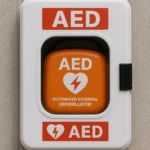
3D Bioprinting for Safer Organ Transplant Solutions

3D Bioprinting: The Future of Organ Transplants
Why It Matters
3D Bioprinting is thus a revolution in the field of organ transplantation. Healthcare professionals today are attending to 3D printing technology, which is a new horizon in this regard. This way, organs can be fabricated as and when necessary, resolving the current scarcity of donor organs.
- Transformative Potential: Create organs by a voice command.
- Personalization: 3D Printed organs of individual patients can be customized to fit the dimensions of the body.
Relevance for All
For patients, it is a promise that the hope of the days when organ transplant recipients will live longer. For researchers, the innovative method is a new sphere for exploration where animal life issues can be solved by new tech inventions in biology. Healthcare providers can offer more positive results and less waiting time, which are advantages to them.
- Game-Changer: List transplant numbers being cut down significantly.
- Innovative Solutions: Technology that is promoting medicine that heals itself. Technology that is transforming healthcare is no longer only Stefan’s imagination but the leading aspect of medicine.
The Rise of 3D Bioprinting in Healthcare
Historical Context
3D Bioprinting, a breakthrough that is entirely different from traditional healthcare treatments, is one of the most outstanding inventions that shifted the discussion in the medical world. First and foremost, the healthcare field relied only on the development of simple surgical operations and organ transplants, which donors attained. As tough times came by, the factory’s operation became burdensome, and the prototype was made to address organ shortages, which brought the need for more innovation in that field.
Evolution in the Sector
- Technological Advancement: in the beginning, the process was slow, but as time passed, there was a flurry of improvements in bio-materials that were designed to mimic natural tissues.
- Accessibility: The movement to personalized medicine utterly revolutionized our understanding of organ donation and transplantation.
Impact on Medicine and Public Health
The consequences are profound:
- Reduction in Waitlists: Beyond imagining, organ donors may no longer be in short supply due to transplantation.
- Customization: Organs made to fit the patient’s body can result in almost no rejection.
- Enhanced Recovery: The recovery period is fastened by implementing the use of customized and thorough devices that reflect nature. In the end, 3D Bioprinting becomes the turning point of the medical revolution, thus creating a pathway for technological development to coexist with medical advancements in ways unimaginable before.
Current State of 3D Bioprinting in Healthcare
Transformative Innovations
Tissue engineering is one of the most promising methods in 3D bioprinting therapy, which offers novel solutions in regenerative medicine.
- Custom-made organs: The subject of personalization is being explored. In the years to come, the omnipresence of these workers will bring to life organs that are for one person or another.
- Cellular diversity: The use of multiple cell types corresponds with better functionality and rejection resistance.
Key Trends
- Regenerative medicine: 3D printing is the technology that are leveraging the speed of bioengineering and medicine as it is being used as a platform to create artificial clear tissue and organs.
- Research growth: Fortunately, more money has been invested in studies, coupled with greater cooperation among the involved institutions, which has empowered innovation.
Future Outlook
- Ethical considerations: Bioethicists, on the other hand, have to climb the ladder of evolution along with Bioprinting to continue helping practitioners do the right thing. In conclusion, 3D Bioprinting isn’t just a trend but a revolution in the process of healthcare evolution.
The Impact of 3D Bioprinting on Healthcare
Patients and Families
3D Bioprinting is making an incredible impact on people’s lives. Thinking about transplants can take months, but thanks to 3D Bioprinting, the possibilities are becoming more expansive, and these days, the waiting is being cut from months to days. Technology develops every day and is continuously improving outcomes.
- Customized solutions: Each organ is designed and created according to an individual’s needs; thus, the risk of rejection is reduced to a much greater extent.
- Reduced costs: The drop in dependency on donors will, in turn, lead to lower bills at the hospitals.
Public Health Improvements
It is a fact that a better quality of life is associated with the effectiveness of 3D-printed organs.
- Longevity: With rapid and early interventions, patients have longer and healthier lives.
- Innovation: Technology is continually advancing, and this is a significant reason for optimism about treatment options. In a world where time is literally life, 3D Bioprinting is not just an innovation; it is a lifeline.
How 3D Bioprinting Impacts Healthcare Professionals
The Challenges We Face
3D Bioprinting is a game-changer but brings along obstacle race:
- Training Gaps: Healthcare professionals should be introduced to new abilities to operate sophisticated bioprinting machines.
- High Costs: The hospital’s budgeting may be tricky due to the first requirement for the investment in Bioprinting.
- Implementation Issues: The technology will not be adopted, and everyday patient care will be done the old way, creating a situation where the new technology will not be successful. The adaptation of new technology to everyday work is still challenging and often does not correspond to an easy task as it sounds in theory.
Unlocking Opportunities
However, against the backdrop of the issues, the upside is huger:
- Better Resource Management: Personalized organ printing is one way of easing the demand for donors’ lists.
- Enhanced Patient Care: By utilizing personalized solutions, patients can recover quickly and achieve optimal outcomes. Introducing 3D printing in the healthcare sector could redefine the way healthcare is provided, paving the way for a patient-centred approach.
The Transformative Power of 3D Bioprinting in Healthcare
Why Embrace 3D Bioprinting?
3D Bioprinting is basically the technology that is bringing about a revolution in the field of incurable diseases. It is not just another drift; in fact, it is a paradigm shift in the process of organ transplants.
- Efficiency Gains: This state-of-the-art tech enables the efficient production of organs, significantly reducing the time taken. Instead of having long waiting lists for donors, the organs needed can be made right there and then.
- Enhanced Patient Outcomes: The use of personalized organs with a lower rejection risk promises better outcomes. It is not uncommon for patients to be released from the hospital sooner and to be healthier in the longer term.
Realizing Solutions
- Accessibility: With the accessibility of 3D Bioprinting, the previous practice of organ donation will become a thing of the past.
- Cost Reduction: The time has come for the healthcare sector to reduce its costs. Thus, treatments will be priced lower, making them more affordable to people at the lower economic poll. At the heart of a world where technological advancements such as TNT (which needs only seconds to blow things up), one all be it; there will be a radiant hope for the future that 3D Bioprinting brings. What can happen if everyone becomes an organ donor without having to go through such a complicated process?
Challenges and Ethical Concerns in 3D Bioprinting
Patient Perspectives
- Accessibility: However, these high-technology treatments are only accessible to the rich—moreover, the wealthy stand to gain more than the poor in the process.
- Safety: Bioprinting organs has raised issues concerning their reliability. Do the scientists even have proof of their safety?
Researcher Perspectives
- Quality Control: It is not easy to set standards when there is a lot of variation, where unpredictability is a consequence.
- Intellectual Property: Who came up with the original ideas? Who gets used and profits?
Regulatory Perspectives
- Lack of Clear Regulations: Our current systems are plagued by a lack of clear regulations, which always causes them to lag behind the rest; often, the legal and safe are not given precise definitions.
- Ethics of Modification: How do we solve the ethical issues related to the modification of organs or body enhancement? In summary, the path to 3D bioprinter development is not easy. Be very careful when dealing with such challenges.
Embracing 3D Bioprinting in Healthcare
Why it Matters
Imagine a world where printed organs are produced just when one needs them. Teksanat makes this possible and maintains new interactive tendencies with you.
Get Involved
- Stay Informed: Stay up to date on the latest developments in 3D Bioprinting; knowledge is power.
- Join Online Communities: Communicate with those who are creative, supportive, and contributing to the cause.
- Support Ethical Practices: Demand that ethical and new technology in transplantation and biotech be applied responsibly. Endeavour to make your point all the time!
- Follow Interactive Content: Give us an example of a video or a tutorial that shows how 3D printing works.
- The future is already within us; let’s hop on! Get in and learn. You can be the one bringing changes to the healthcare sector.
The Future of 3D Bioprinting
3D Bioprinting is an exceptional technology that would usher in a new era in medicine. If people could print custom organs in the near future, the future would not be so far away. Isn’t it the realization of all these factors?
Breakthroughs on the Horizon
- Personalized Medicine: Custom organs will help prevent transplant rejection by guaranteeing conformance to the recipient’s body.
- Rapid Prototyping: By improving the current techniques, it will be possible to design objects within minutes instead of weeks and months.
- Cost Efficiency: The process of revolutionizing organ unit costs creates the availability of transplants to a broader audience. Bright times ahead, the technology sector shall experience an oxygen supply, and this will, of course, lead to an overwhelming demand for skilled professionals! Jobs in biotechnology, bioengineering, and regenerative medicine show that there are new markets for these careers. In this period, young innovators will be the ones who will design a whole new era in medicine.
Navigating the Future of Healthcare with 3D Bioprinting
Key Insights
The healthcare domain is rapidly moving towards the use of advanced technologies. 3D bioprinting technology is now playing a front-and-centre role in the industry. Humanity could now dare to imagine a future of organ creation that is less sci-fi and more of an actual therapeutic and regenerative medicine area instead.
- Custom Solutions is the process of resulting in an effective treatment for both patients and their unique immune systems.
- Accessibility: With the help of advanced technology, more people will f be able to receive life-saving transplants.
- Innovation: This feature is a clear sign that medical fields could have tremendous advances. Staying informed is the one must! Stay on top of the game of change. Engage and Act:
- Are you interested in knowing how this will affect you personally?
- Get informed about organ bioprinting technology.
- Ask your doctor how soon we can expect to see printed organs in human transplants. The future of healthcare is happening now—do you realize it?












Post Comment